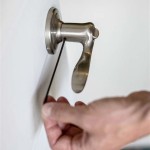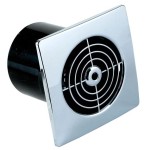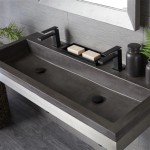Where To Hang Pendant Lights Over a Bathroom Vanity
Pendant lights, when strategically positioned over a bathroom vanity, not only enhance the aesthetic appeal of the space but also provide functional task lighting. Determining the optimal placement involves considering several factors, including the height of the ceiling, the size of the vanity, the style of the pendants, and the overall design of the bathroom. Properly hanging pendant lights requires careful planning and precise execution to ensure both safety and visual harmony.
Determining the Optimal Height for Pendant Lights
The height at which pendant lights are hung is crucial for both functionality and aesthetic appeal. If hung too high, the light may be too diffuse and fail to provide adequate illumination for tasks such as applying makeup or shaving. Conversely, if hung too low, the pendants can obstruct the view, create a visual barrier, and potentially pose a safety hazard. A general guideline is to position the bottom of the pendant light approximately 30 to 36 inches above the vanity countertop. This distance typically allows for sufficient task lighting while keeping the fixtures out of the direct line of sight.
Several factors influence the optimal height for pendant lights. The height of the bathroom ceiling is a primary consideration. In bathrooms with standard 8-foot ceilings, the 30- to 36-inch rule generally applies. However, in bathrooms with higher ceilings, pendant lights can be hung slightly lower to maintain a balanced proportion. For example, in a bathroom with a 10-foot ceiling, the bottom of the pendant may be positioned 28 to 34 inches above the vanity, providing increased visual interest and effectively filling the vertical space. Conversely, in bathrooms with lower ceilings, such as those found in older homes or basements, pendant lights might need to be hung slightly higher to avoid a cramped feeling and ensure adequate headroom. In these cases, a distance of 32 to 38 inches above the vanity may be more appropriate.
The size and style of the pendant light also play a role in determining the optimal hanging height. Larger pendants, particularly those with significant visual weight, may need to be hung slightly higher to prevent them from overwhelming the space. Smaller, more delicate pendants can be hung slightly lower to create a more intimate and focused lighting effect. The style of the pendant also influences the ideal height. For example, pendants with long, slender shades may need to be hung higher than those with wider, more spherical shades to prevent them from blocking the view or feeling intrusive.
The height of the individuals using the vanity should also be considered. If the primary users of the bathroom are taller than average, hanging the pendants slightly higher may be necessary to ensure they do not obstruct their view or cause them to bump their heads. Conversely, if the users are shorter, hanging the pendants slightly lower may be more appropriate to provide adequate task lighting and ensure they are within easy reach for cleaning and maintenance. Ideally, the height should be adjusted to accommodate the needs and preferences of all users.
Before permanently installing the pendant lights, it is advisable to temporarily hang them at different heights to determine the most visually appealing and functional position. This can be achieved by using temporary hooks or ropes to suspend the pendants at various heights and observing the lighting effect from different angles. It is also helpful to have someone stand in front of the vanity to assess the visibility and potential for obstruction. Taking the time to experiment with different heights can help ensure that the final placement is both aesthetically pleasing and practical.
Spacing Pendant Lights Evenly Over the Vanity
The spacing between pendant lights is equally important as their height. Proper spacing ensures balanced illumination and prevents the vanity area from appearing cluttered or disproportionate. As a general rule, the distance between each pendant should be approximately the same as the width of the pendant shade. For example, if each pendant has a shade that is 8 inches wide, the pendants should be spaced approximately 8 inches apart. This spacing allows for adequate light coverage without creating harsh shadows or glare.
The size of the vanity is a primary factor in determining the appropriate spacing for pendant lights. For smaller vanities, typically those less than 48 inches wide, two pendant lights are often sufficient to provide adequate illumination. These pendants should be centered over the sink or spaced evenly across the width of the vanity, depending on the location of the mirror and other fixtures. For larger vanities, particularly those exceeding 60 inches in width, three or more pendant lights may be necessary to ensure balanced lighting. In these cases, the pendants should be spaced evenly across the vanity, with the center pendant aligned with the center of the vanity and the remaining pendants spaced equidistant from the center.
The number of sinks in the vanity also influences the spacing of pendant lights. If the vanity has two sinks, it is generally recommended to position a pendant light above each sink to provide focused task lighting. The pendants should be centered over each sink and spaced far enough apart to prevent them from crowding each other or obstructing the view. If the vanity has only one sink, the pendant lights can be centered over the sink or spaced evenly across the vanity, depending on the desired effect.
The style of the pendant lights can also impact their spacing. Pendants with wider shades may require more spacing to prevent them from overlapping or creating a cluttered appearance. Conversely, pendants with narrower shades can be spaced closer together to create a more concentrated lighting effect. It is important to consider the visual weight of the pendants when determining their spacing. Larger, more substantial pendants may require more space around them to avoid overwhelming the area, while smaller, more delicate pendants can be grouped closer together to create a more intimate and inviting atmosphere.
The placement of the mirror is another important consideration when spacing pendant lights. If the mirror extends the full width of the vanity, the pendants should be spaced evenly across the vanity to provide balanced illumination and prevent any areas from being overshadowed. If the mirror is smaller and centered over the sink, the pendants can be positioned to flank the mirror, creating a symmetrical and visually appealing arrangement. It is important to ensure that the pendants do not cast unwanted shadows on the mirror or obstruct the view of the user.
Before permanently installing the pendant lights, it is helpful to use painter's tape to mark the proposed locations on the ceiling and vanity. This allows you to visualize the spacing and make any necessary adjustments before committing to the final placement. It is also helpful to stand in front of the vanity and assess the lighting effect from different angles. Ensure that the spacing is visually balanced and provides adequate illumination for all tasks. Taking the time to plan and visualize the spacing can help ensure that the final installation is both functional and aesthetically pleasing.
Considering the Style and Design of the Bathroom
The overall style and design of the bathroom play a significant role in selecting and positioning pendant lights. The pendants should complement the existing décor and enhance the overall aesthetic of the space. The style of the pendants should be consistent with the other fixtures and finishes in the bathroom, such as the faucets, cabinet hardware, and mirrors. Choosing pendants that align with the overall design theme can create a cohesive and harmonious look.
In contemporary bathrooms, sleek and minimalist pendant lights are often a popular choice. These pendants typically feature clean lines, simple shapes, and neutral colors such as chrome, brushed nickel, or matte black. Glass or metal shades are common in contemporary designs, providing a modern and sophisticated look. The pendants are often hung at uniform heights and spaced evenly across the vanity, creating a balanced and symmetrical arrangement. The focus is on functionality and clean aesthetics, with the pendants serving as both a source of task lighting and a stylish accent.
In traditional bathrooms, more ornate and decorative pendant lights may be more appropriate. These pendants often feature intricate details, such as crystal accents, antique finishes, or fabric shades. Warm colors, such as bronze, gold, or ivory, are common in traditional designs, creating a sense of warmth and elegance. The pendants may be hung at varying heights and spaced unevenly across the vanity, creating a more informal and eclectic look. The focus is on creating a sense of luxury and sophistication, with the pendants serving as both a source of ambient lighting and a decorative focal point.
In rustic or farmhouse-style bathrooms, pendant lights with a more natural and organic feel are often preferred. These pendants may feature materials such as wood, rope, or metal, with a distressed or weathered finish. Simple and unadorned designs are common, with a focus on functionality and durability. The pendants may be hung at varying heights and spaced unevenly across the vanity, creating a relaxed and informal atmosphere. The focus is on creating a sense of warmth and authenticity, with the pendants serving as both a source of task lighting and a rustic accent.
The color palette of the bathroom should also be considered when selecting pendant lights. The pendants should complement the existing colors and finishes in the bathroom, creating a harmonious and balanced look. If the bathroom features a neutral color palette, such as white, gray, or beige, pendant lights in a contrasting color can add a pop of visual interest. Conversely, if the bathroom features a bolder color palette, pendant lights in a more neutral color can help to tone down the space and create a sense of balance.
The overall size and scale of the bathroom should also be considered when selecting pendant lights. In smaller bathrooms, smaller and more delicate pendants may be more appropriate, while in larger bathrooms, larger and more substantial pendants can be used to create a more dramatic effect. The pendants should be proportional to the size of the vanity and the overall dimensions of the bathroom.

20 On Trend Bathroom Lighting Ideas For 2024 1stoplighting

Bath Vanity With Staggered Hanging Lights Design Ideas

20 On Trend Bathroom Lighting Ideas For 2024 1stoplighting

Bath Vanity With Staggered Hanging Lights Design Ideas

How To Choose Bathroom Vanity Lighting Riverbend Home

Hanging Pendant Lights Over Bathroom Vanity Marvelous Lighting Playmaxlgc Com Home Interior 3 Mirror Design Elegant

7 Must Read Tips On Choosing Bathroom Lighting

Bathroom Pendant Lighting Design Photos And Ideas Dwell
Pendant Drop Tips For Incorporating Lights Into A Bathroom Design Remodeling

The Best Types Of Bathroom Lighting Light Fixtures Modernize
Related Posts







